A Project Worth Finishing. Malabar II
Inside the finished hull
In the middle of the Mornington Peninsula, an hour’s drive southeast of Melbourne, and 10kms from any substantial body of water, there is a block of land that really could only be described as a retirement home for old boats. A few are receiving some late life attention, but most of them have gone there just to die. There are the ubiquitous unpainted rusting steel home-made boats with big, hard chines and protruding welds that look like badly healed surgery.
There is Vinny Lauwers yacht, a Van de Stadt 47 called VISION QUEST that he made circumnavigation in as a paraplegic in 1990. There is an S&S 34 that looks like it IS getting some loving, a timber International Dragon which certainly needs a home and dozens of other fibreglass dreams that need to be put out of their misery. Each one at some stage in its life has been loved and cherished, if only as a beacon of hope for a happier time when warm summer winds might blow gently across the decks and the worries of lives and loves, and jobs and obligations could be left in the gurgling wake off the transom.
But in one corner of the yard, under a well-constructed white plastic dome tent, is something rather special.
Exactly 100 years ago a young Naval Architect named John Alden drew the lines for a boat for his own use, called MALABAR II. At 42ft this design is often seen as the archetypal small schooner and versions of the design are still successfully blue water cruising a century later.
Alden was born in Troy, New York in 1884, one of eight children, only four of whom survived. His family's summer holidays were spent on the Sakonnet in Rhode Island and on the Narragansett Bay, where he first learned about boats. He sailed his sister's flat-bottomed rowing boat using an umbrella as a sail and was said to be inspired by the local fisherman and regattas.
John Alden
At 18 years old, his father died, and Alden made the decision to train as a naval architect. He took courses at MIT and apprenticed with prominent naval architects Starling Burgess starting in 1902. In 1900, his family moved to Dorchester, Massachusetts where the Grand Banks fishing schooners were docked. These were said to have inspired his later designs. A compulsive doodler, as a child he made countless sketches of the boats that were later to make him famous.
In the winter of 1907, Alden undertook a voyage that would define his distinctive design trademark: The schooner Fame, owned by the Eastern Fishing company, had to be returned to Boston when her crew of 23 men had gone down with smallpox and there was no one left to sail her. Alden put together a crew of four inexperienced young men and one old salt to undertake the journey. During the weeks that followed, they experienced extreme winter weather of up to 60 mile an hour winds that turned the salt spray to ice. The boat, and the crew, completed the journey and it is said that Alden learned how to design a boat that would be resilient in heavy seas and what was important when a vessel was short-handed. His subsequent designs are admired not only for their grace and elegance but for their stability and for the fact that they can, generally, be sailed single-handedly if necessary.
After the voyage, Alden returned to the Burgess offices but left in 1909 to found his own company, the Alden Design Office in 1909.
The early years of the Alden Design were difficult and were said to have put a strain on his finances and on his marriage, which broke down after only three years. By 1917, business had improved, and the offices were doing sufficiently well that by the 1920s, the office was able to employ specialist draftsmen. The approach Alden took was to discuss requirements with the clients, make the initial sketches and then hand over the work to the draftsmen to complete. Therefore, each boat designed by the firm had Alden's individual style stamped on. It was at this stage in his career that the design for MALABAR II were made.
Now race forward 63 years, to 1985 where in Victoria, a young 27-year-old shipwright writes off to Wooden Boat Magazine in the USA for a set of plans for a MALABAR II. What he gets back is basically a table of offsets with a few general overview plans but from that he starts to construct his dream boat. The shipwright’s name was Peter Anderson. He had grown up sailing clinker Cadet dinghies at Royal Melbourne Yacht Squadron, and although he had a successful business building small craft such as Cherubs and Paper Tigers this was certainly his most ambitious project yet. He built a shed from reclaimed timber and corrugated iron not far from where the boat is now and put in a year of intensive work helped by an engineer friend and produced what we can now see under the covers in the boat yard.
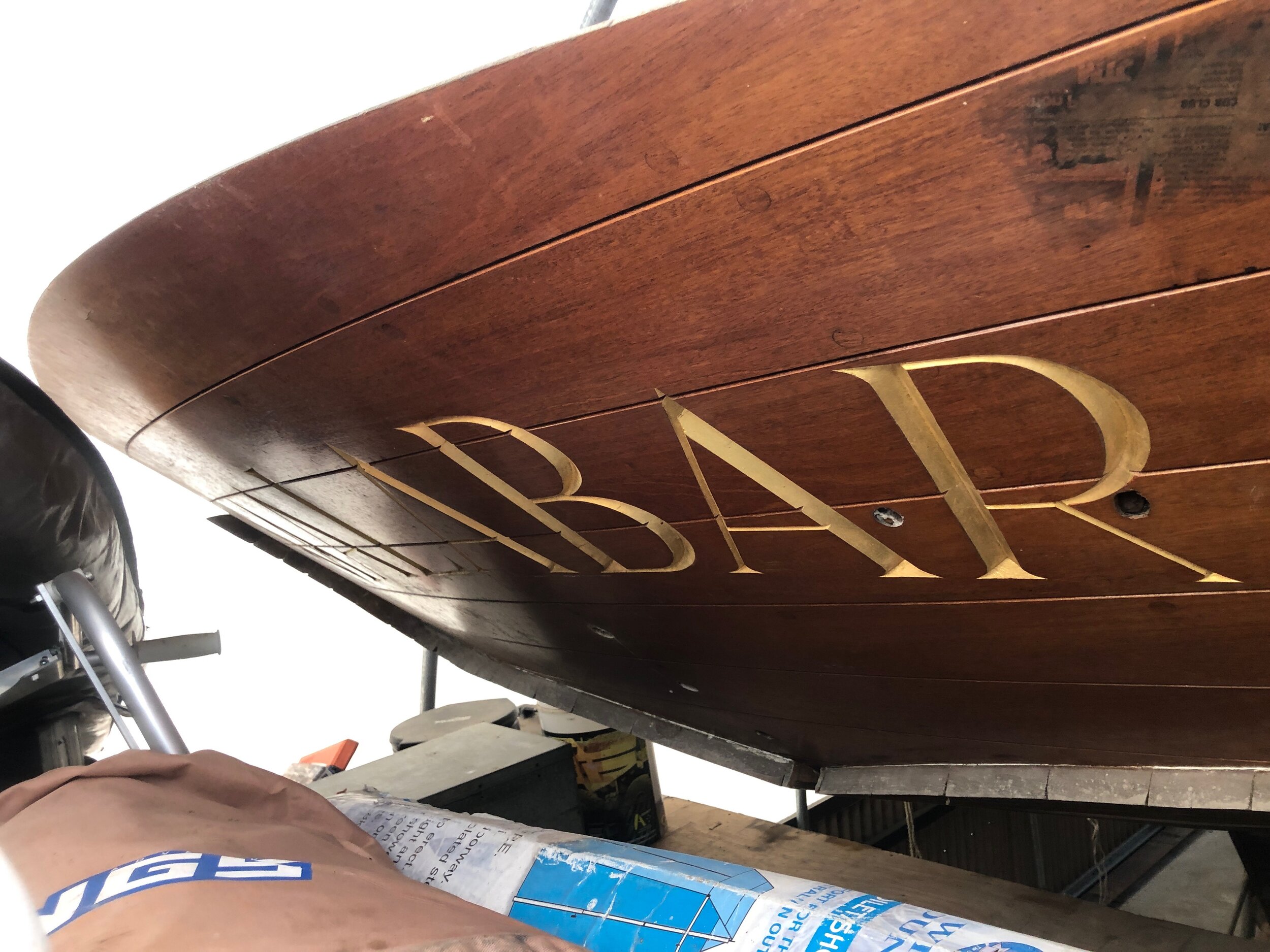
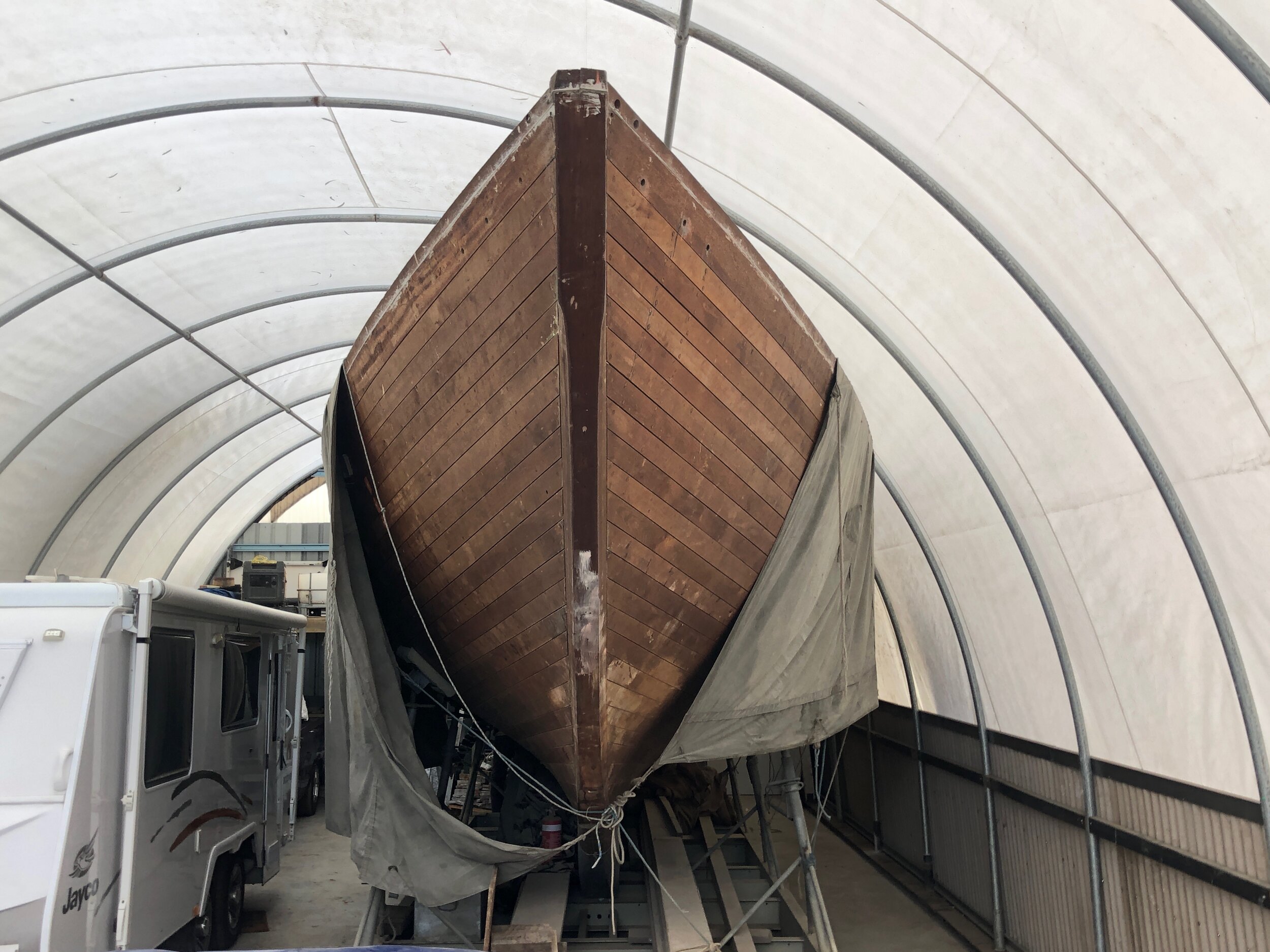
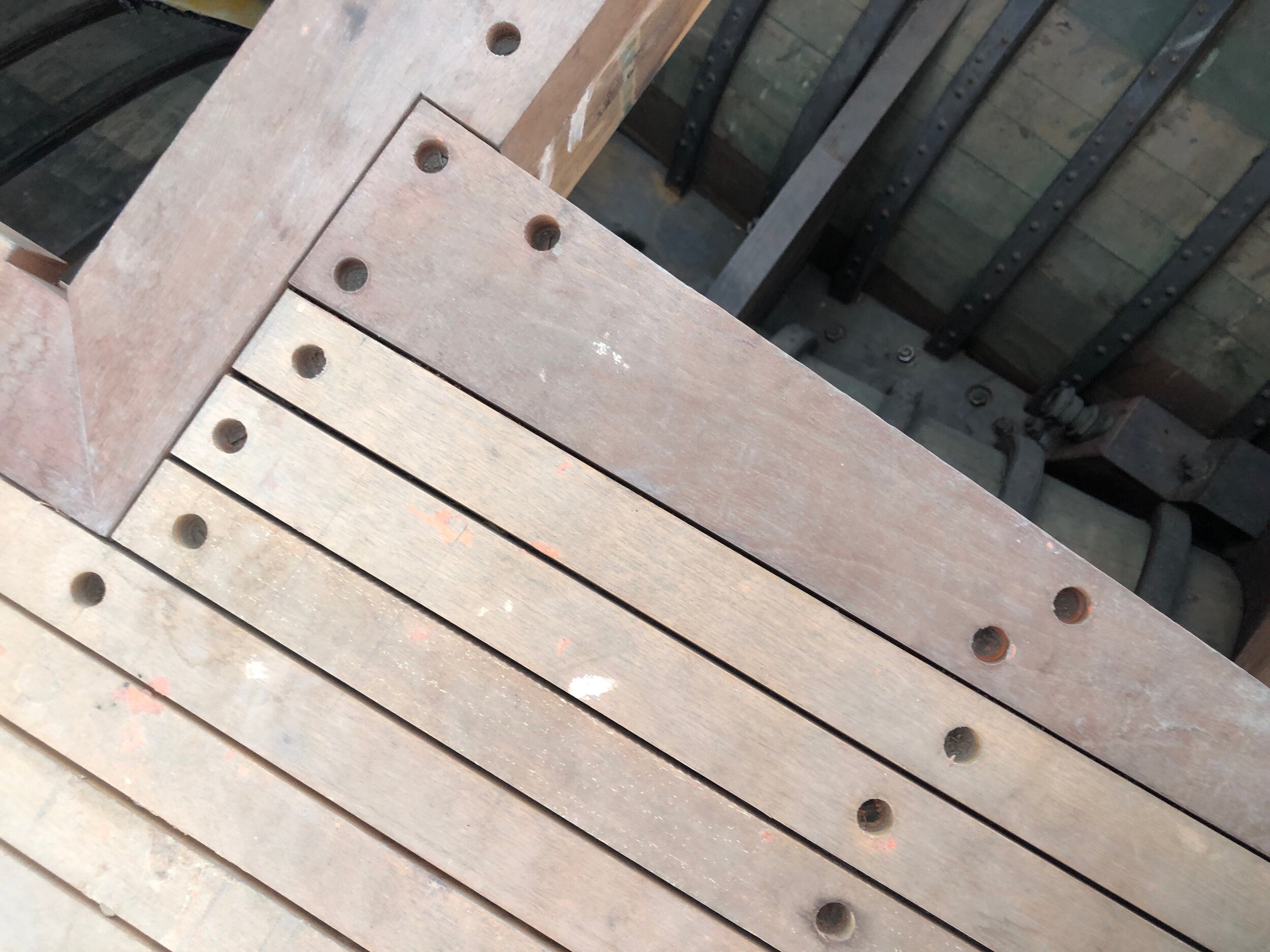
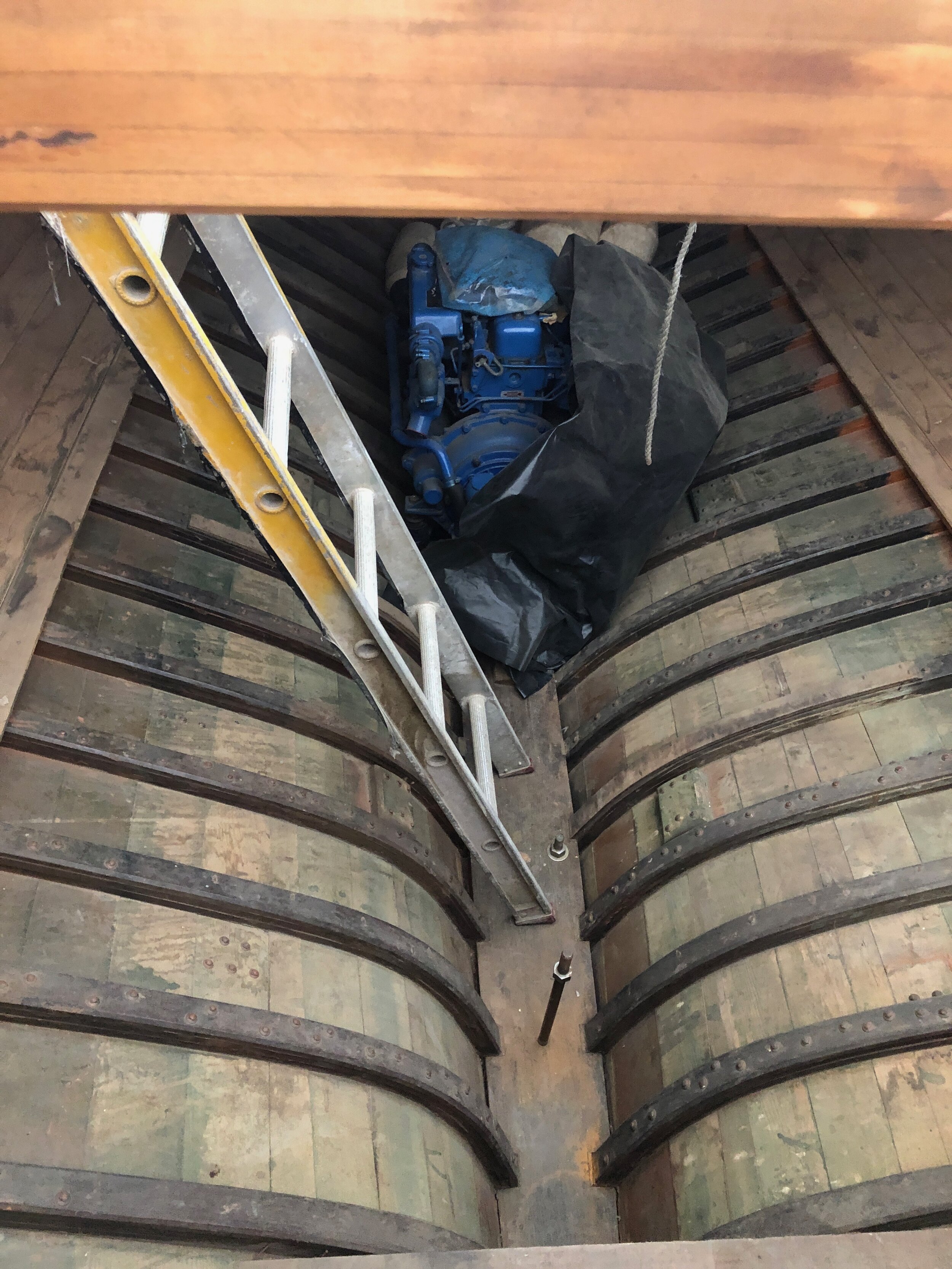
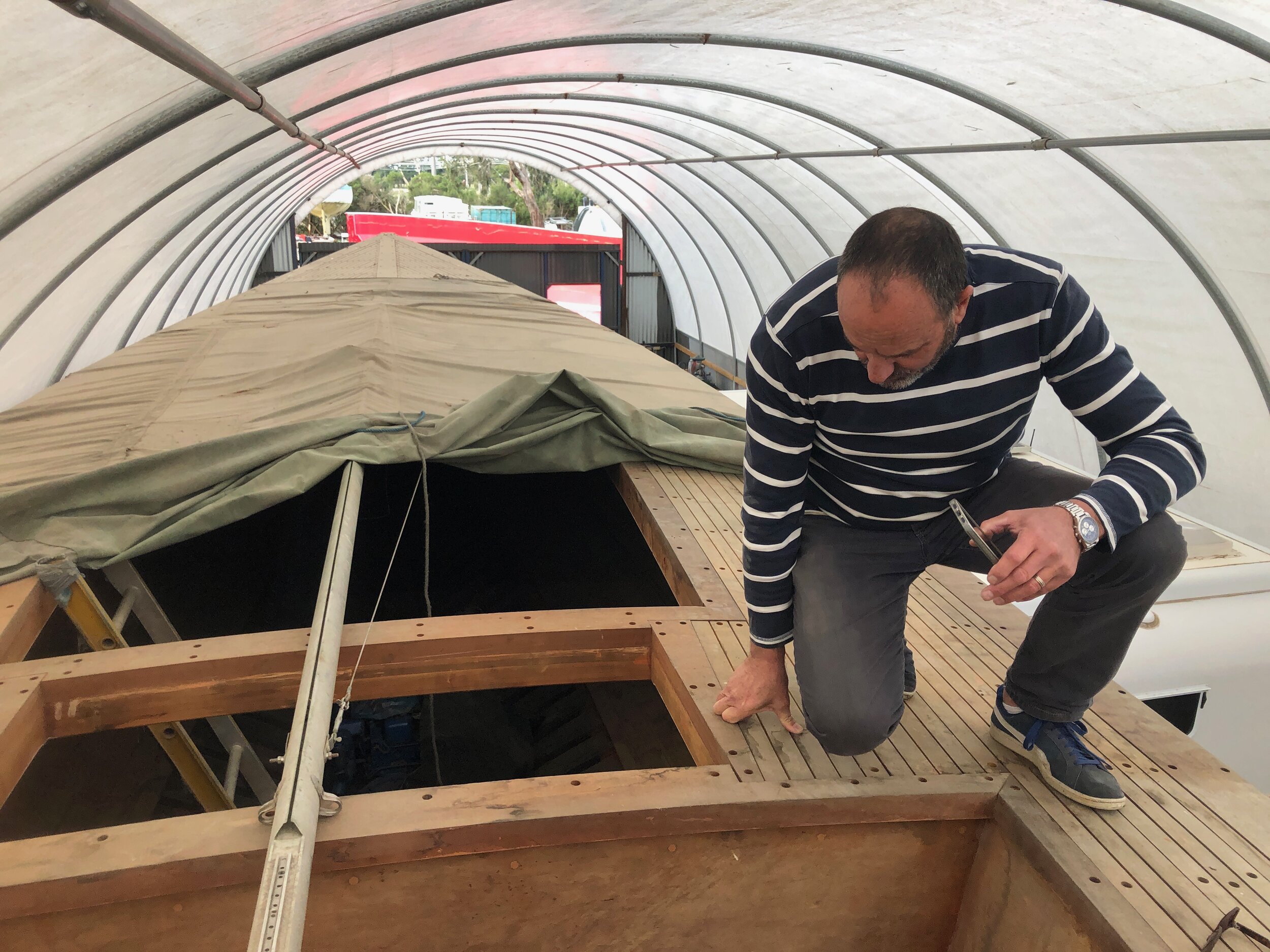
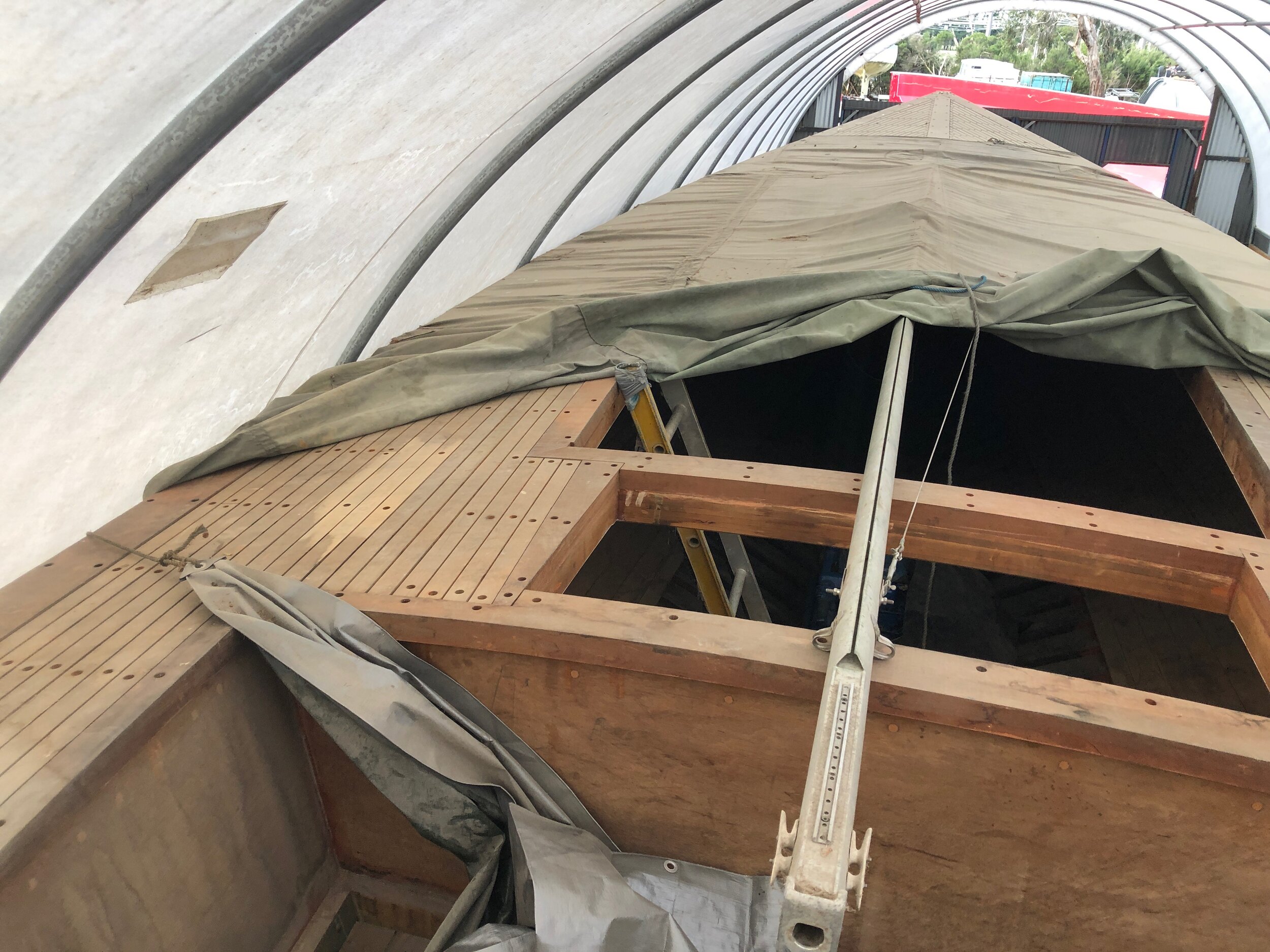
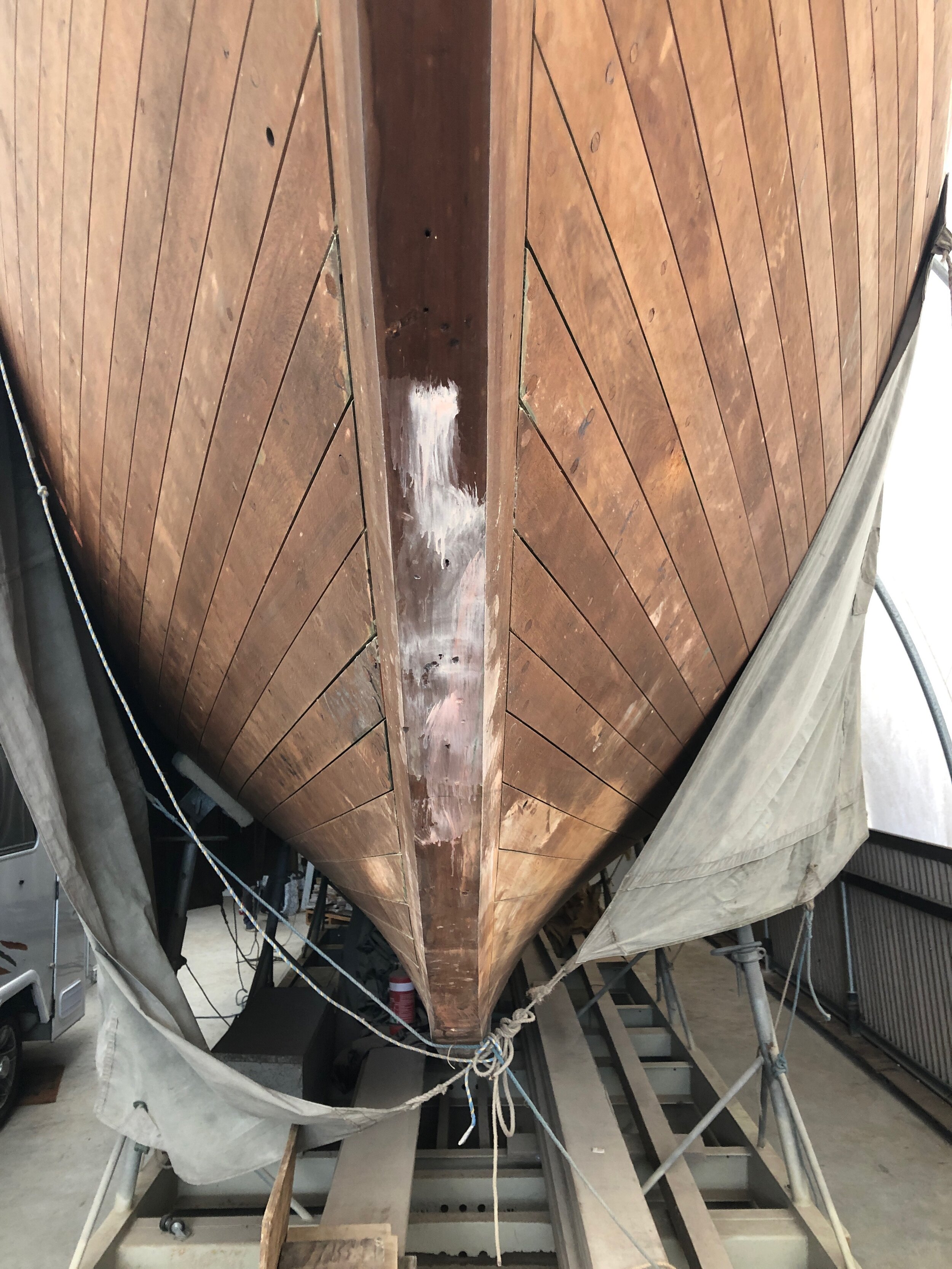
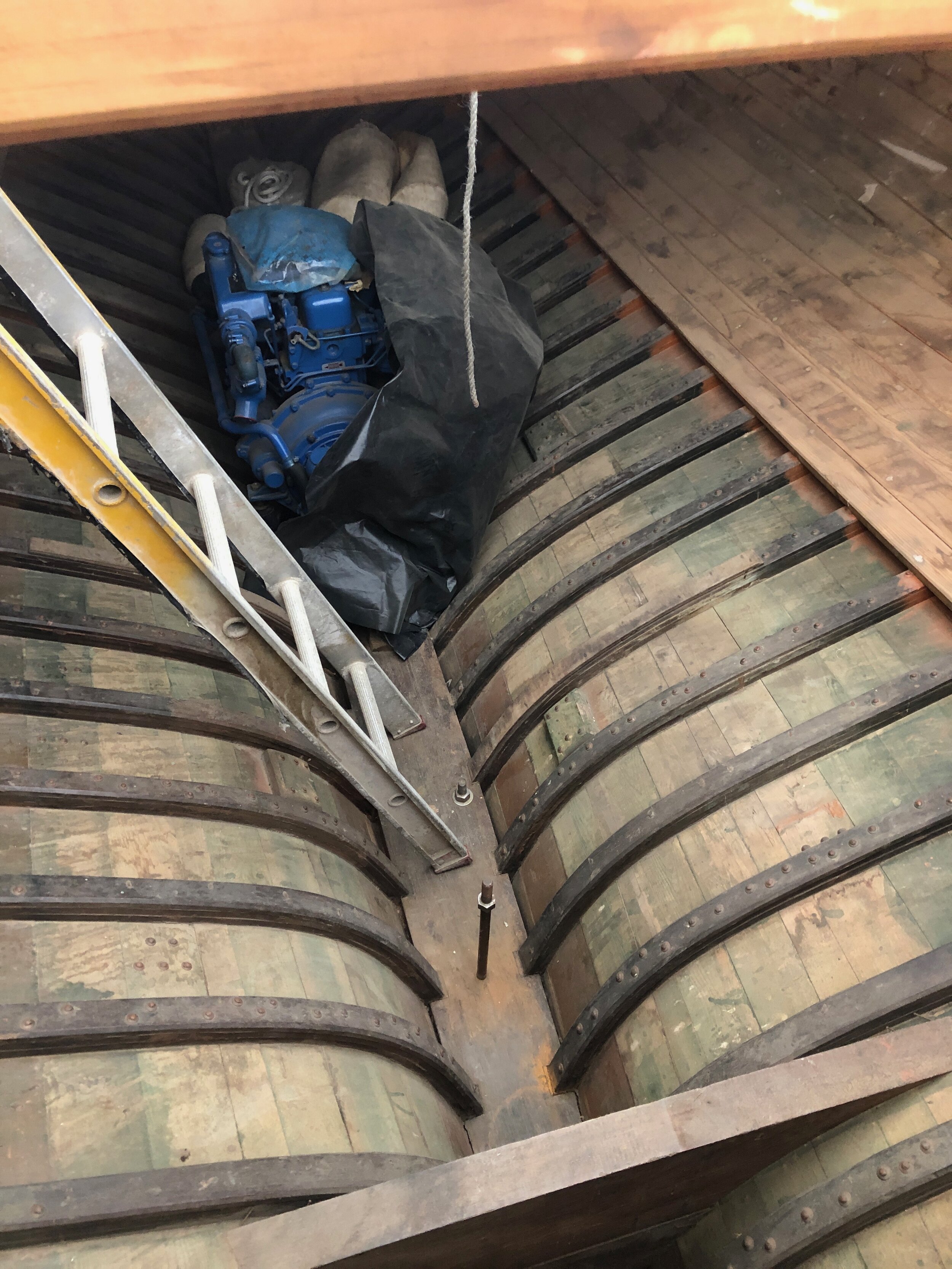
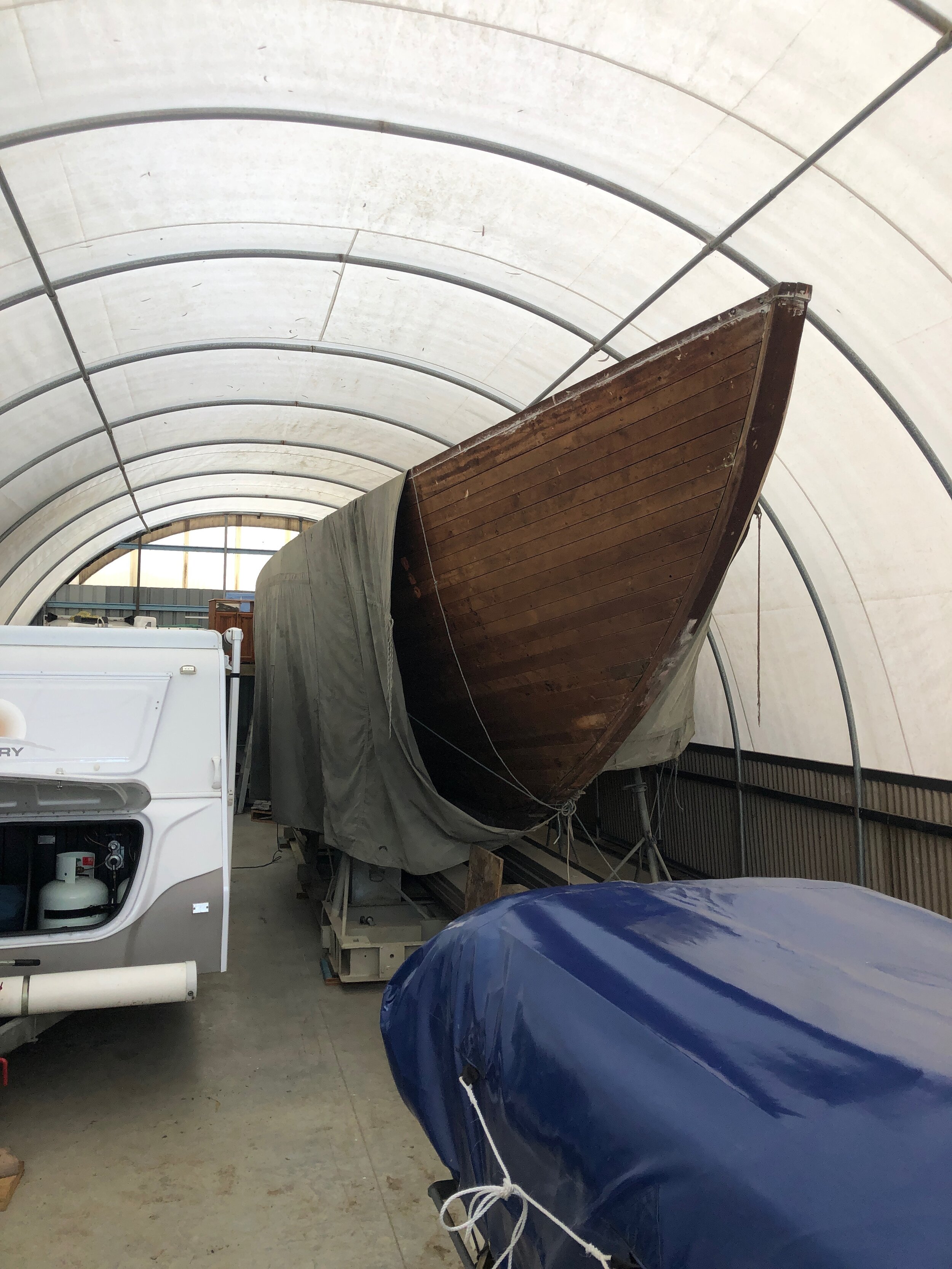
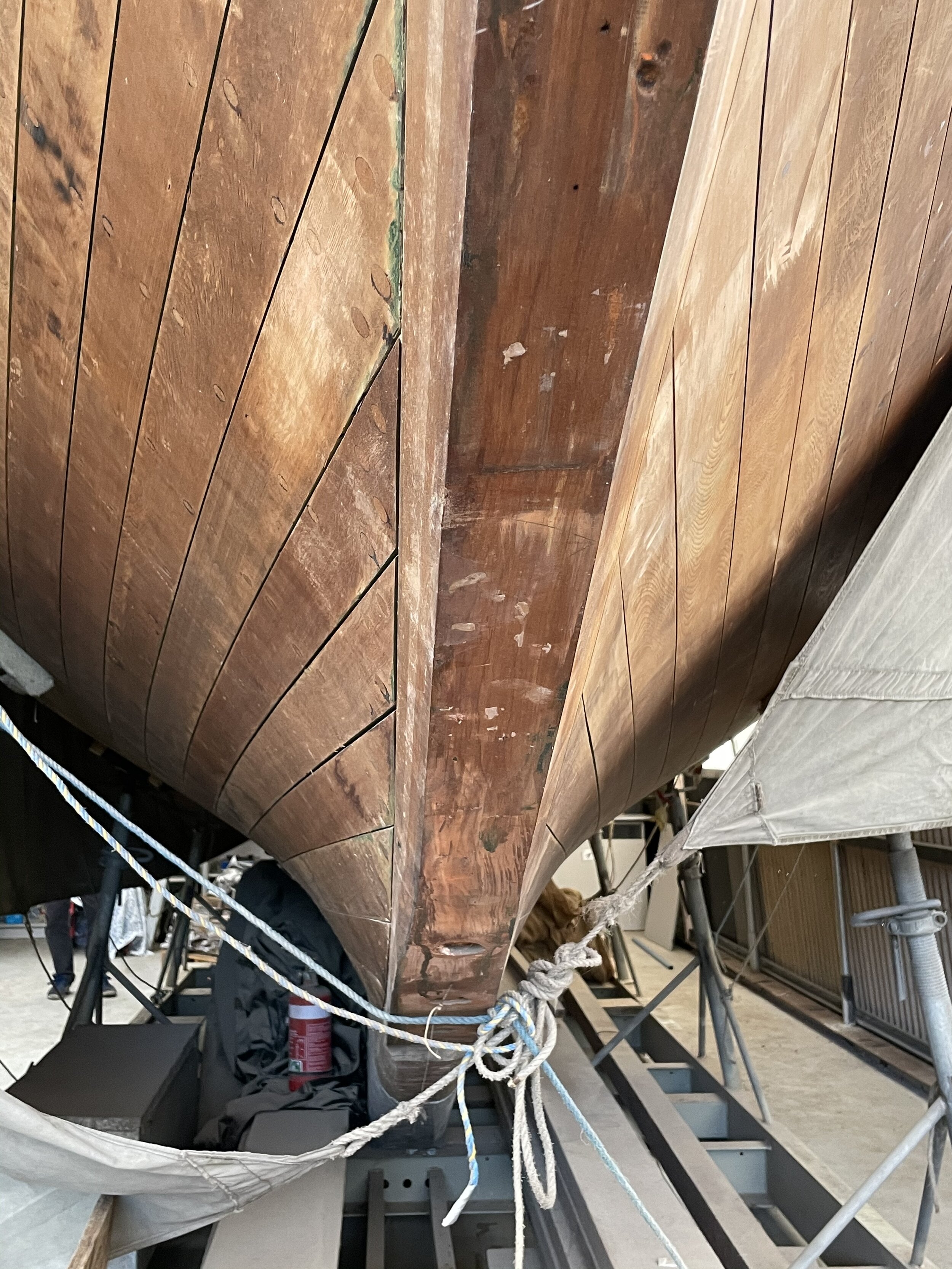
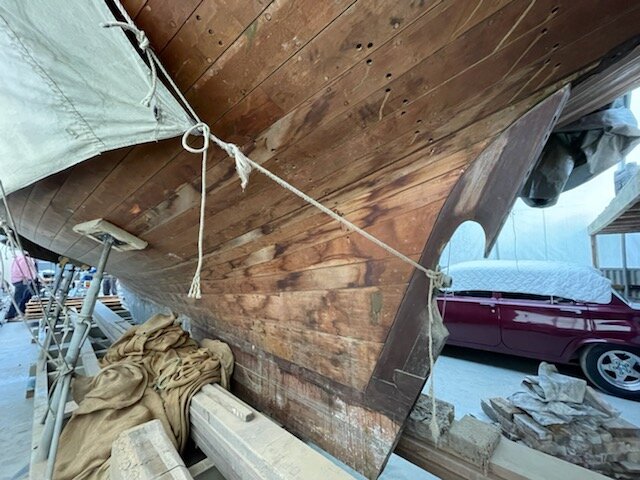

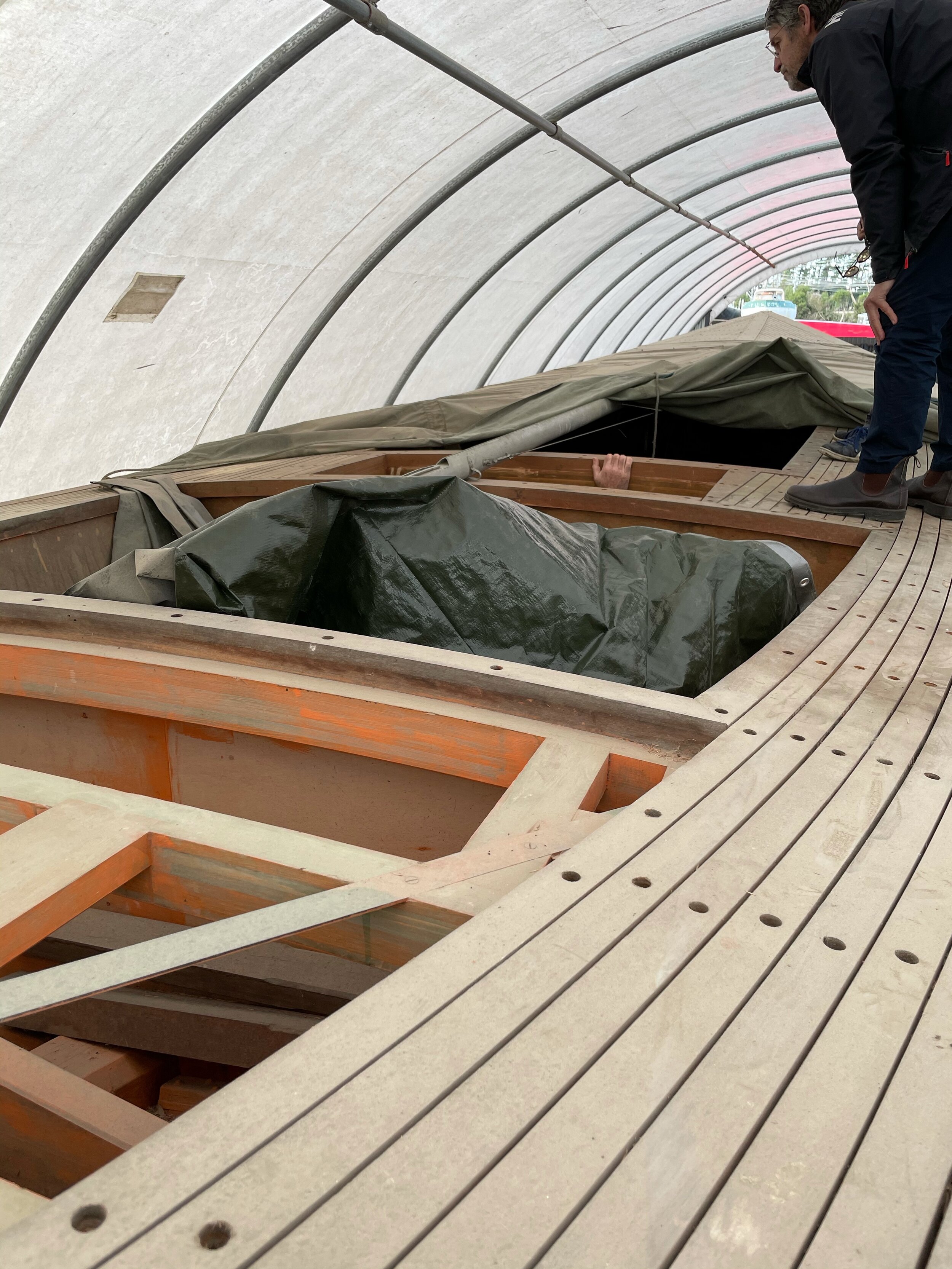
It’s basically a beautifully completed hull and deck, true to Alden’s Malabar II plans. She’s been slightly strengthened for the conditions in Bass Strait with ribs a little closer than specified and with extra stringers in the bilges. Peter carefully sourced his timber mostly from Tasmania. The ribs are Spotted Gum, the planking is Celery Top Pine the keel is Iron Bark and the deck is Queensland White Beech. He poured the keel himself and fastened all the planking using the best quality copper rivets. Having done all this backbreaking work to an incredibly high standard the project stalled, and Peter’s life began to move in a different direction.
The situation now is interesting. There are plenty of boats out there that need restoring. The extent of the work is often hard to fathom and so the costs are liable to blow out. With this boat (which has never seen salty water) the quality of the work so far is apparent to anyone with a little knowledge. (A highly reputable boat builder from the Peninsula described her as one the best built boats he had ever seen.) Almost more importantly, exactly what is required to finish her off is easy to calculate. Add into that the extensive list of materials and parts that come with the boat and the project seems to me to be an obvious choice for an astute wooden boat lover looking for a craft of a proven design, with unquestionable good looks and a personality to be proud of. Peter is very realistic about the money he would want for her.
Now you might be thinking…”its going to cost me a fortune to buy the materials to finish her off”
Have a look at the list of materials that would accompany a sale
· Enough clear grained Douglas Fir (from Lewis) to build all the spars including the bow sprit and gaffs. Douglas Fir is thought to be superior to Oregon as it is grown at higher altitude)
· A Perkins 4108 Diesel Engine (never used) with a German Hurth V-drive gearbox (this gear box allows the engine to sit further aft giving more space in the main cabin)
· Enough genuine Burmese Teak for all the Cabin sides
· Enough genuine Honduras Mahogany for the interior fit out.
· Hardware for all the skylights
· Fynspray fresh and saltwater pumps
· A vintage head.
· Edson stearing gear allowing for the raked back wheel as designed
· Bronze through hull fittings
· All caulking cotton required
· 75mm thick piece of celery top pine for the rudder.
· Piles of bronze screws, mushroom vents, cleats, bronze and copper rod. etc etc
The boat is currently under cover (as it has always been) near Tyabb on the Mornington Peninsula, Victoria. The storage costs is around $200/month and shipwright work can be done on site. If you would like to find out more send us an email and we will put you in touch with Peter.
LEGACY, a great example from the USA of the Malabar II





